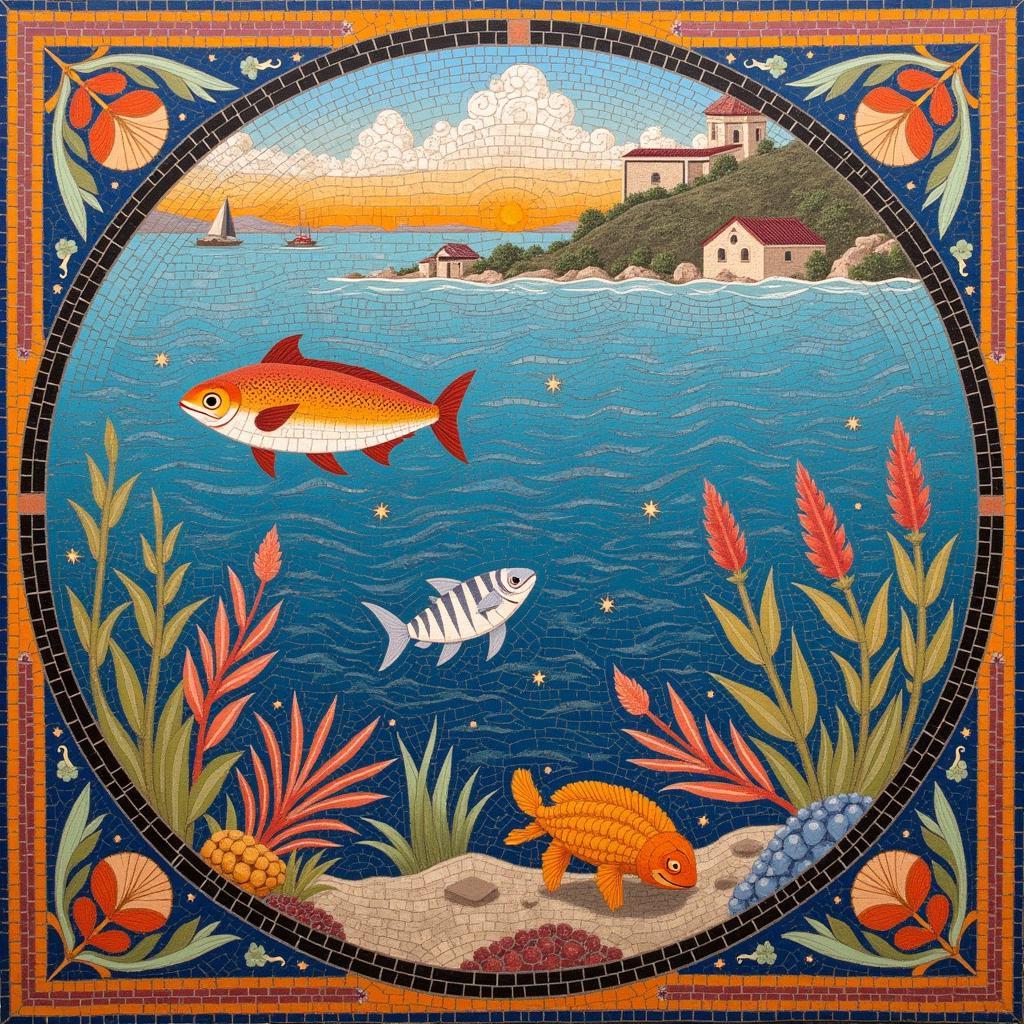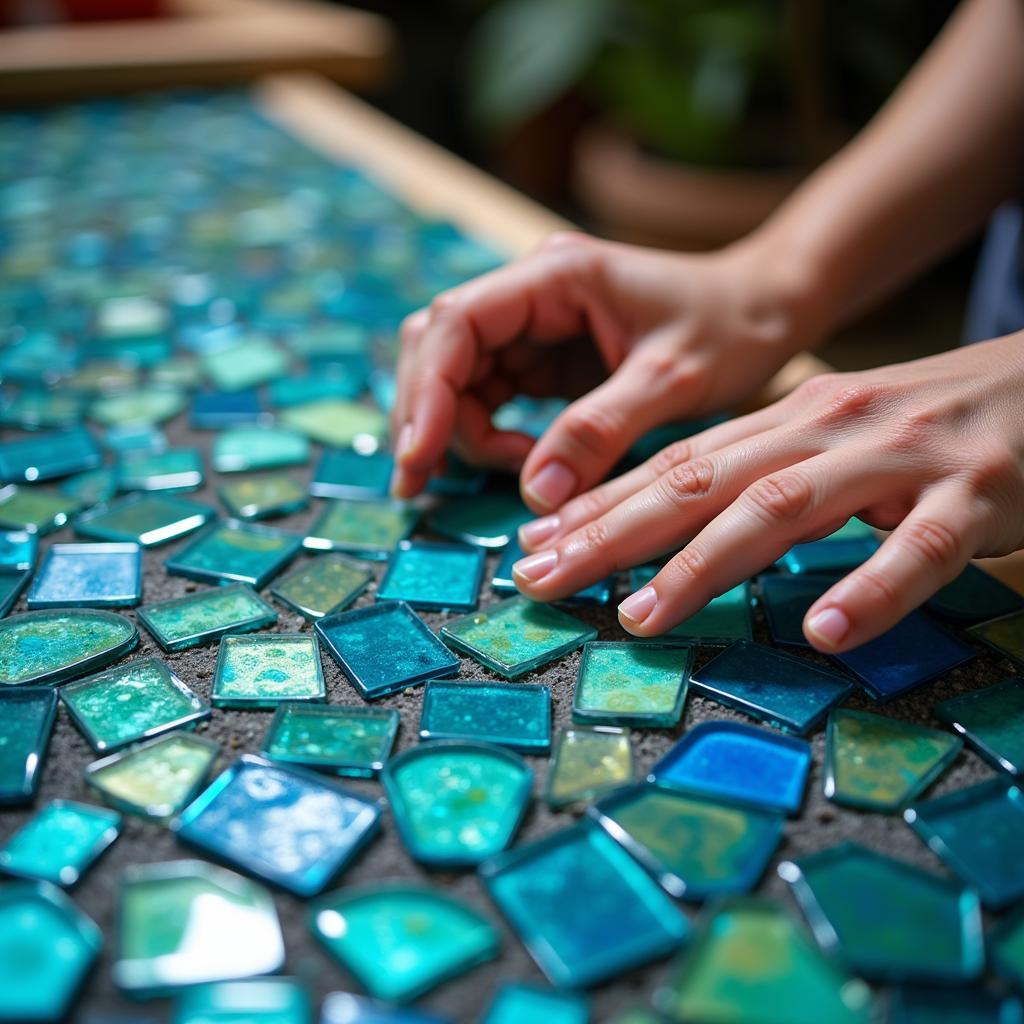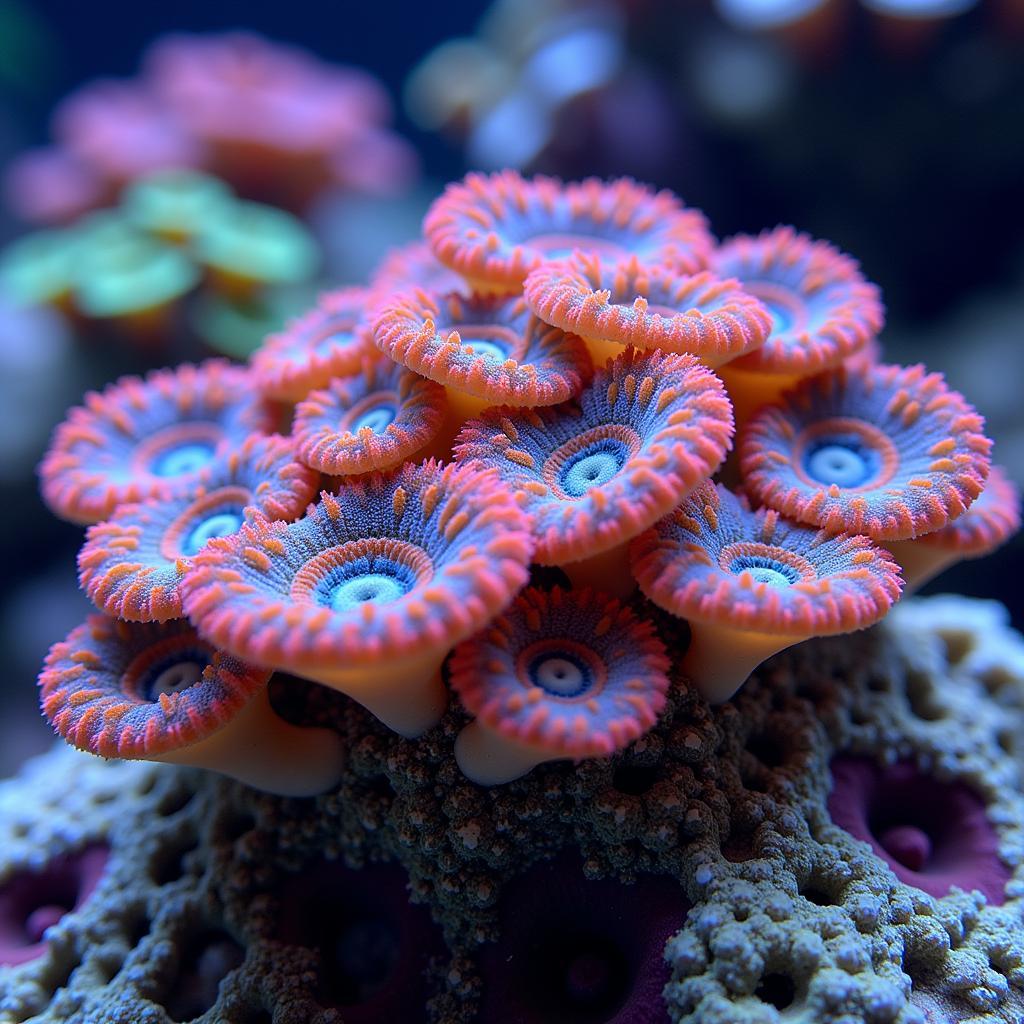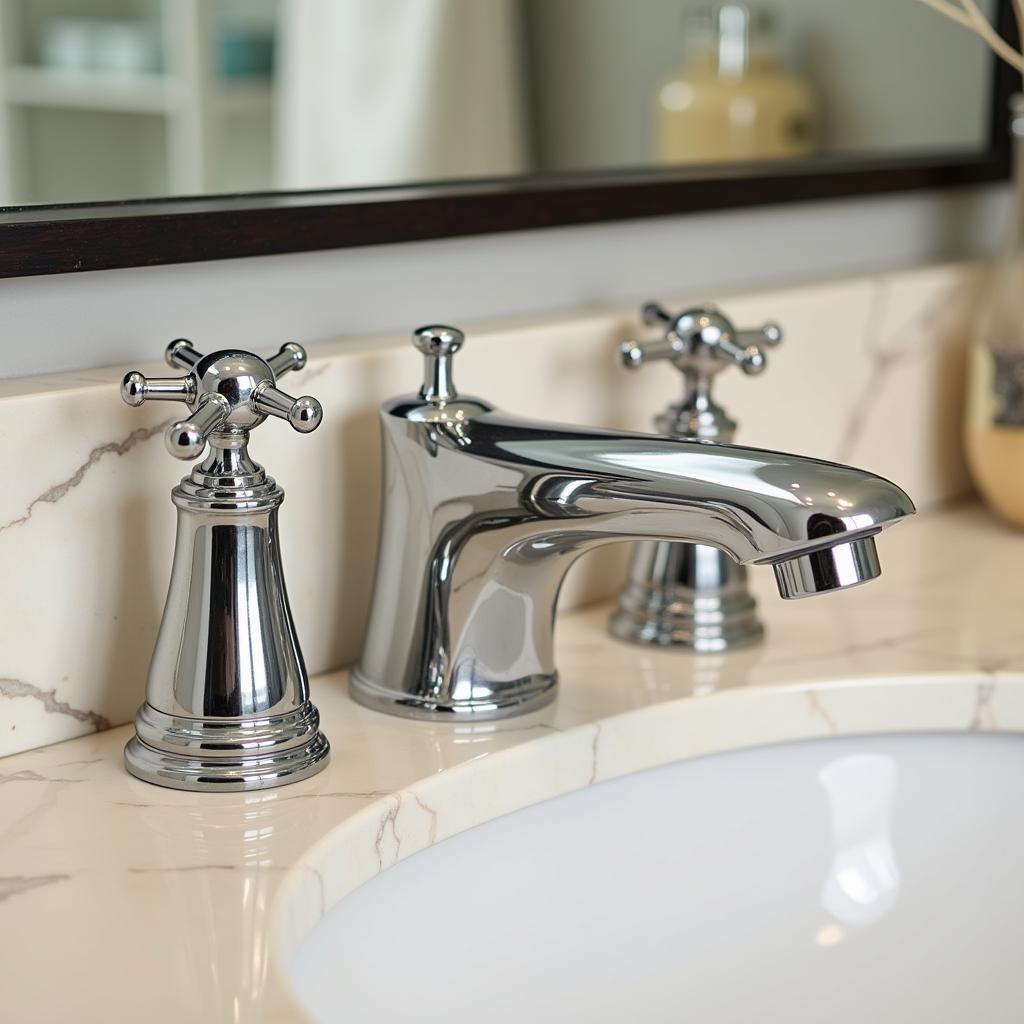Exploring the Beauty of Water Mosaic Art
Water Mosaic Art offers a captivating blend of artistic expression and the natural world. It’s a unique art form where artists meticulously arrange small pieces of colored glass, tile, or other materials to create stunning images and patterns that shimmer and flow like water. This detailed guide will delve into the intricacies of water mosaic art, exploring its history, techniques, and enduring appeal.
A Brief History of Mosaic Art and Its Aquatic Inspiration
 Ancient Roman Mosaic Depicting Ocean Scene
Ancient Roman Mosaic Depicting Ocean Scene
Mosaic art has a rich history, dating back thousands of years. Ancient civilizations, including the Greeks, Romans, and Byzantines, used mosaics to adorn their homes, public spaces, and places of worship. These early mosaics often depicted scenes from mythology, daily life, and, notably, the natural world. Water, with its fluidity and life-giving properties, held particular significance and was frequently represented in these ancient works.
The Romans, in particular, were masters of using mosaics to depict aquatic scenes. Their intricate designs often featured marine life, such as fish, dolphins, and mythical sea creatures, alongside flowing water patterns that created a sense of movement and depth. These mosaics weren’t merely decorative; they reflected the importance of water in Roman culture and its association with abundance, purity, and the divine.
Techniques and Materials: Bringing Water to Life in Mosaic
 Artist Creating Water Mosaic Using Glass Tiles
Artist Creating Water Mosaic Using Glass Tiles
Creating a water mosaic art piece is a labor of love, requiring patience, precision, and an eye for detail. Artists employ various techniques and materials to achieve the desired effect, but the basic process remains relatively consistent:
-
Design and Planning: The first step involves creating a detailed design of the intended mosaic. Artists carefully consider the colors, shapes, and textures they want to incorporate, keeping in mind how these elements will interact to create the illusion of water.
-
Material Selection: Water mosaic art often utilizes glass tiles due to their reflective qualities, which beautifully mimic the shimmering surface of water. Other materials, like ceramic tiles, stones, and even recycled materials, can also be incorporated to add texture and depth.
-
Cutting and Shaping: Once the materials are selected, they are carefully cut and shaped using specialized tools. This step requires precision to ensure that each piece fits seamlessly within the overall design.
-
Adhering the Tiles: The cut tiles are then adhered to a substrate, typically a sturdy surface like concrete, wood, or mesh. Artists use a strong adhesive to secure the tiles in place, ensuring the mosaic’s longevity.
-
Grouting: After the adhesive dries, grout is applied to fill the spaces between the tiles. This step not only secures the tiles further but also contributes to the overall aesthetic by creating lines and texture.
The Allure of Water Mosaic Art: Why We’re Drawn to It
Water mosaic art continues to captivate and inspire for several reasons:
-
Visual Appeal: The interplay of light on the mosaic’s surface creates a mesmerizing effect, mimicking the reflection and movement of water. The use of different materials and textures adds depth and dimension, making the artwork come alive.
-
Versatility: Water mosaic art is incredibly versatile and can be adapted to suit various styles and settings. From intricate depictions of marine life to abstract representations of flowing water, the possibilities are endless.
-
Connection to Nature: In an increasingly urbanized world, water mosaic art offers a tangible connection to the natural world. It reminds us of the beauty and tranquility of water, evoking a sense of peace and serenity.
-
Durability and Longevity: Mosaic art is known for its durability, making it suitable for both indoor and outdoor installations. Water mosaics, in particular, are often used to enhance gardens, pools, and other outdoor spaces, where they can withstand the elements and retain their beauty for years to come.
Water Mosaic Art: A Timeless Art Form for the Modern Age
Water mosaic art represents a harmonious fusion of ancient techniques and modern aesthetics. Whether adorning a private residence, a public park, or even a simple garden wall, these shimmering artworks never fail to enchant. They serve as a testament to the enduring power of art to connect us with the beauty of the natural world and inspire a sense of wonder.
Frequently Asked Questions About Water Mosaic Art
1. What are the best places to display water mosaic art?
Water mosaic art can enhance various spaces, both indoors and outdoors. Popular locations include bathrooms, kitchens, swimming pools, fountains, gardens, and patios.
2. How do I care for my water mosaic art?
Water mosaic art is relatively easy to maintain. Regular cleaning with mild soap and water is usually sufficient. However, it’s important to avoid using harsh chemicals or abrasive cleaners that could damage the tiles or grout.
3. Can I commission a custom water mosaic art piece?
Yes, many artists specialize in creating custom water mosaic art pieces. You can discuss your vision, preferred materials, and size with the artist to create a unique piece that reflects your style.
4. How long does it take to create a water mosaic?
The time required to create a water mosaic varies depending on the complexity of the design, the size of the piece, and the materials used. Small, simple mosaics might take a few days, while larger, more intricate pieces could take several weeks or even months to complete.
5. What is the average cost of water mosaic art?
The cost of water mosaic art varies widely depending on factors like the artist’s experience, the size and complexity of the piece, and the materials used. Small mosaics can start from a few hundred dollars, while large, custom installations can cost several thousand dollars.
If you’re looking to add a touch of artistry and natural beauty to your surroundings, consider exploring the world of water mosaic art. Its shimmering surfaces, vibrant colors, and enduring appeal make it a captivating art form that will continue to inspire for generations to come.
Need assistance? Contact us at Phone Number: 02462573573, Email: danteum@gmail.com or visit us at Savico Megamall, 7-9 Đ. Nguyễn Văn Linh, Gia Thụy, Long Biên, Hà Nội 10000, Việt Nam. Our customer support team is available 24/7 to assist you.



